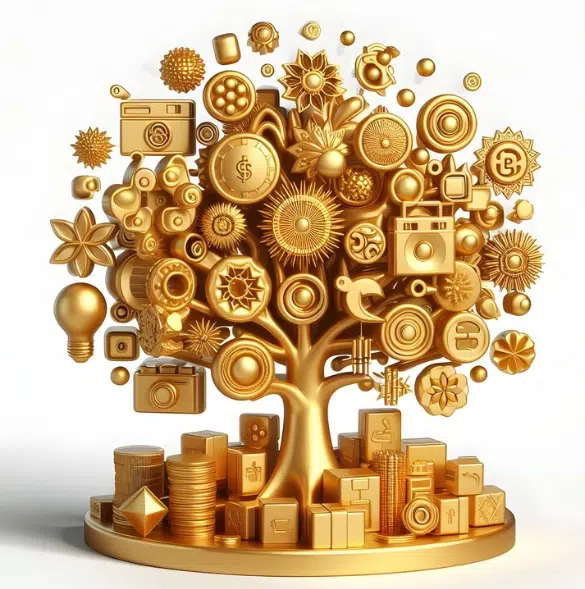As we stride into 2025, investors are once again faced with the pivotal question: is it wise to invest in tangible assets like gold in today’s ever-fluctuating economic climate? The allure of physical assets has persisted through centuries, attracting those seeking stability in uncertain times. Gold, known as a timeless store of value, along with other real assets, are experiencing a resurgence. This renaissance urges us to reevaluate their role in our investment strategies in the modern age, especially considering the dynamic market conditions that characterize the post-pandemic world.
In the United States, this renewed interest in tangible assets is largely driven by growing concerns over inflation, interest rate volatility, and the unpredictable performance of traditional equities. American investors are increasingly allocating portions of their portfolios to physical commodities such as gold, silver, and even real estate as a hedge against economic instability. This shift highlights a broader trend toward diversification and risk mitigation, emphasizing the enduring appeal of assets that hold intrinsic value regardless of market sentiment or monetary policy changes.
The enduring appeal of gold
Gold, often heralded as the “metal of kings,” continues to capture the imagination of investors worldwide. Its intrinsic value and limited supply make it an attractive choice for those seeking to diversify their portfolios. The appeal of gold lies in its historical reputation as a hedge against inflation and currency devaluation. In 2025, with rising geopolitical tensions and economic uncertainties, gold’s allure as a safe haven seems stronger than ever. Most notably, central banks continue to fortify their reserves, signaling confidence in gold’s enduring relevance.
Nevertheless, investing in gold is not without its challenges. Its price can be volatile, influenced by a myriad of factors, ranging from global economic policies to mining production rates. Yet, for many, the potential for stability and protection from market downturns outweighs the risks. Gold stands as a beacon of security and continues to be a comforting presence in many investor portfolios, reminding us of its relentless capacity to retain value amidst turbulent times.
Gold compared to other precious metals
While gold garners much attention, other precious metals such as silver, platinum, and palladium also play significant roles in the investment landscape. Silver, in particular, is favored for its dual utility as both a precious metal and an industrial commodity. Its conductivity makes it indispensable in the manufacturing of electronics and solar panels, promising a steady demand. Investors often view silver as a more affordable alternative to gold. Nevertheless, its price can be even more volatile, making it both a tempting and risky venture for the uninitiated.
Platinum and palladium are also noteworthy, especially in the automotive sector due to their application in catalytic converters. These metals command higher prices, and their markets are influenced by industrial demands more significantly than gold. However, in the long term, shifts towards electric vehicles may impact their desirability. For investors, these metals represent an opportunity to tap into a niche market with specific industrial applications, providing a different angle from the traditional gold investment.
The impact of digital currencies
The emergence of cryptocurrencies has sparked debate over the necessity and relevance of tangible assets. Many saw digital currencies as the futuristic alternative to physical commodities; however, issues of security and extreme volatility tarnish their reputation. Yet, the digital asset world is evolving, learning from past mistakes. Even with the rise of Bitcoin and Ethereum, the need for physical value representation through gold remains pertinent. Cryptocurrencies and tangible assets can coexist, offering diversification across traditional and modern financial landscapes.
Assessing the future with real assets
Beyond metals, tangible assets encompass a wide array of investment opportunities, including real estate, collectibles, and commodities like oil and agricultural products. Each category offers unique characteristics that can enhance portfolio diversity. Real estate remains a favored choice, consistently proving its merit with stable returns and growth potential. The real estate market, though subject to cyclical changes, benefits from the intrinsic demand for land and property, making it a pivotal component of a long-term investment strategy.
The importance of diversification
In investment, diversification is a tried-and-true principle, providing resilience against market volatility. Tangible assets are essential within a diversified portfolio, offering balance against traditional financial instruments like stocks and bonds. The integration of physical commodities, real estate, and collectibles alongside equities and fixed income instruments creates a robust investment strategy. This multifaceted approach guards against sudden market fluctuations, ensuring stability and steady growth over time.
Embracing a balanced investment strategy
The investment landscape in 2025 calls for a strategy that combines both forward-thinking innovation and time-honored traditions. Gold, along with other tangible assets, continues to offer resilience and sustainability. As economic conditions evolve, investors must remain vigilant and adaptable, integrating new possibilities while acknowledging the enduring benefits of physical assets. Understanding global trends, technological advancements, and market movements is crucial to navigate this complex environment.





